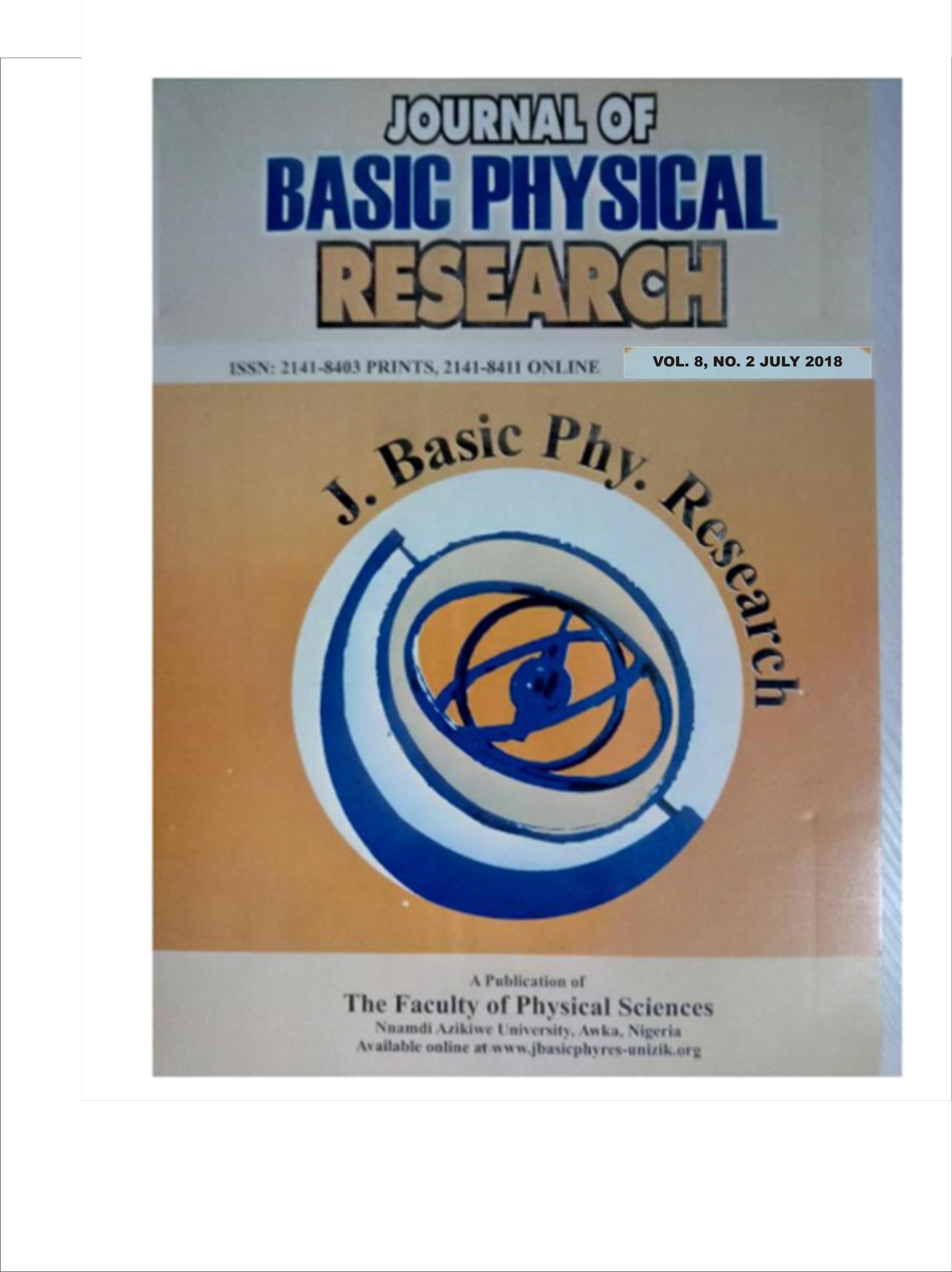SHALLOW-SURFACE 2DERT SURVEY AT THE VICINITY OF URUAGU-NNEWI GULLY SITE, ANAMBRA STATE
Abstract
Geoelectric survey has been carried out at the vicinity of an active gully site in Uruagu, Nnewi, Anambra state,
Nigeria in order to delineate the lithology and subsurface geologic structures therein suspected to be prone to
failure. Electrical Resistivity Tomography (ERT) data was collected based on Wenner array with the aid of
ABEM SAS 1000 terrameter and multi-electrode selector ES10-64. Forty-two steel electrodes were aligned
concurrently for the automated selection of four-electrode system of Wenner32SX protocol for each datum point
measured. The registered data were processed with the aid of Res2DInv Version 3.2 software. Results of the
shallow-surface 2D model inversion tomograms showed that the resistivity range of the eight selected profiles
falls between1 25,500 . Interpretation of this range based on the geologyy of the area, previous
works at the study area and published standard resistivity, the range of resistivity in the area encompasses that
of weathered laterite, saturated soil, clay, sandy clay, clayey sand and sandstones occurrences at depths. Of
these, clay, sandy clay and clayey sand of various grades were noted to be predominant. Structurally, the
tomograms show a moderate heterogeneity, minor portions of relatively flat layering, suspected fractured and
anticlinal zones at depths. The study suggests that the active landslides currently exacerbated at Uruagu-Nnewi
are most probably aggravated by differential saturation of the shallow gully’s vicinity hence, leading to
intermittent abrupt landslide and failures. The understanding that the immediate vicinity of Uruagu-Nnewi gully
site is predominantly characterised by saturated, weak and aqueous clayey soils is undoubtedly a vital
information to curious environmental managers. Particularly, civil engineers are richly informed about the
unseen depths of the gully’s vicinity from the foregoing findings and would be well guided in their foundation
designs for construction works towards erosion control and bridges at the site. Hence, the menace can be said
to have been proactively and ultimately be resolved based on this near-surface geophysical survey.


